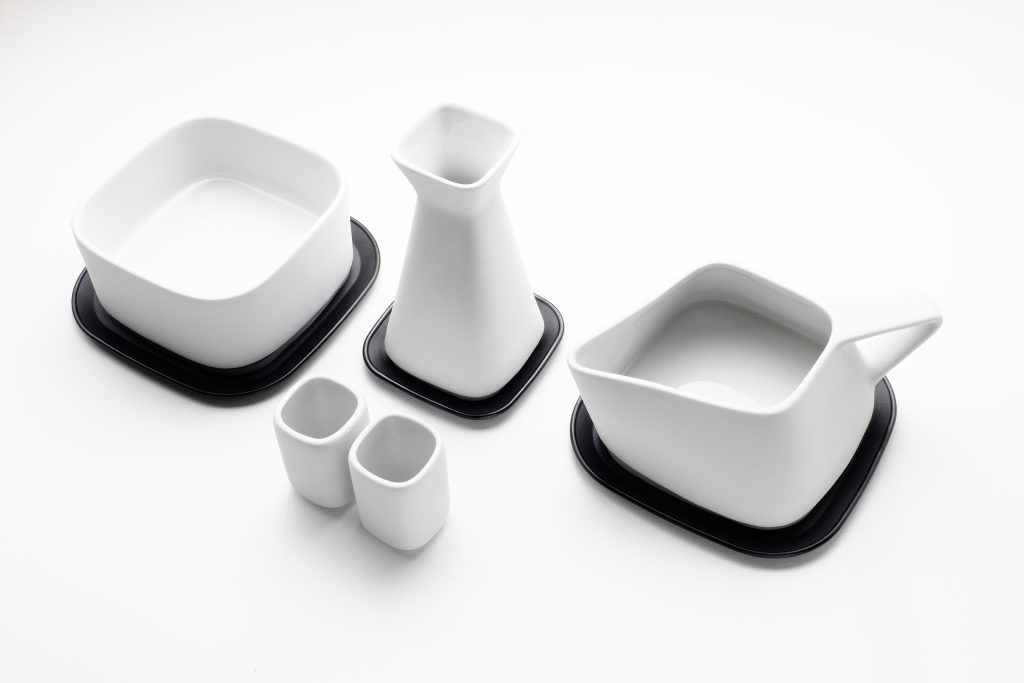IHA speaks with Howard Chiu, CEO and co-founder of THAT! Inventions, creator of elegant and functional kitchen and tableware products.
When Howard Chiu, Jung-Ya Hsieh and Ta-Wei “Dave” Chien formed the company in 2013, they discovered that they had a common scientific approach to problem solving, based on their experience in practical research and development systems. They shared a passion for creating something from nothing and building a brand from scratch. With a single prototype and their belief that they could succeed, they began to investigate materials science and temperature control.
Setting their goals for innovation, design and practicality, the trio developed products that are unique, beautiful and convenient. Based upon temperature management, the items chill or warm food, enhancing enjoyment of food and friendship at social gatherings. Their first product, a butter knife now named SpreadTHAT! and launched at the 2014 International Home + Housewares Show, was recognized as a finalist for the IHA Global Innovation Awards (gia) for product design. The following year, their ScoopTHAT! ice cream scoop and HeatTHAT! microwave-heated coasters with matching ceramic serveware were named best in their categories at the 2015 gia awards. Subsequently, their growing line of elegant kitchen and tableware products continue to collect international honors, including the Red Dot and IF awards, for design and innovation.

IHA: Howard, tell us about your company’s beginning.
HC: At our very first trade show in 2014, our butter knife was selected to as a finalist for gia. This proved two things to us: First, that a viable solution for my kids’ problem with spreading cold butter on toast was also a viable solution to the consumer at large. And second, that our joining of engineering and the corresponding design elements was a marriage made in heaven. This pivotal moment at the Housewares Show gave us the confidence we needed to replicate the same engineering and design process for our next innovations.
IHA: You were trained in the U.S. as an engineer and materials scientist. How do you keep up with rapid technological developments and find inspiration when designing new products?
HC: We stay tuned in to new technologies and materials and advancements in science. To that end, we stay connected with a handful of government and private research organizations such as the Metal Industries Research and Development Centre, Textile Research Center and the University of Washington incubator program. We then try to match new sciences with a consumer need. Nothing drives that point home more than seeing my own kids get frustrated while tearing toast or shed a fake tear while claiming to have been “severely burned” by soup that’s too hot for them – the seemingly lukewarm soup might make use of a sensor technology and an advanced color pigment to turn the soup spoon red before the kids complain about it.
IHA: How did you choose the company name?
HC: I came up with a dozen names for the brand and everyone on the team voted for them. I knew this was the best of them because I had in mind a brand umbrella, under which every different product shared the same root of the brand name. And that was reinforced by public response. When first faced with our avant-garde designs, most people can’t help but exclaim, “Wow! THAT’S amazing!”

IHA: How do you choose which idea to take to the next step — to product development?
HC: We rigorously enforce a nine-step “G-process” that funnels each inspiration through “gates” or checkpoints, such as user experience evaluation, consumer feedback, market positioning study and mass production feasibility. An idea will be archived if it fails at any of the nine checkpoints. At any given time, we may have 20-25 raw ideas going through the G-process to weed them out. It is also curiously nebulous how we identified some of our most successful products early on during this process. It’s almost like magic – intuition tells us that a particular innovation would make it through and be successful.
IHA: How do you identify the key user audience for your products?
HC: We validate a few selected products via Kickstarter and a couple more via focus groups. As extensive as the feedback was using those methods, we still get plenty of surprises when a product actually enters the consumer world.

IHA: How do you see design’s importance in our industry as it moves forward?
HC: The future of design considers a broad knowledge base of materials, engineering, science, symbology, user experience and user interface, aesthetics and most importantly, how to enact consumer paradigm shifts to achieve disruptive innovation. What do future cooks expect to see and do when they walk into the 22nd century kitchen? What does the future food preparation process look like in our mind’s eye and what will people care about the most during that process? Design is the key that leads to disruptive disruptions and will inspire even better innovations in our industry.
Learn more about THAT! Inventions and its products. For more interviews with interesting designers and housewares innovators, visit the Discover Design blog.
To continue reading Inspiration Magazine, read the next article, Reimagined Stores: Why We Need Display, or read the entire Inspiration Magazine Issue 17.2



